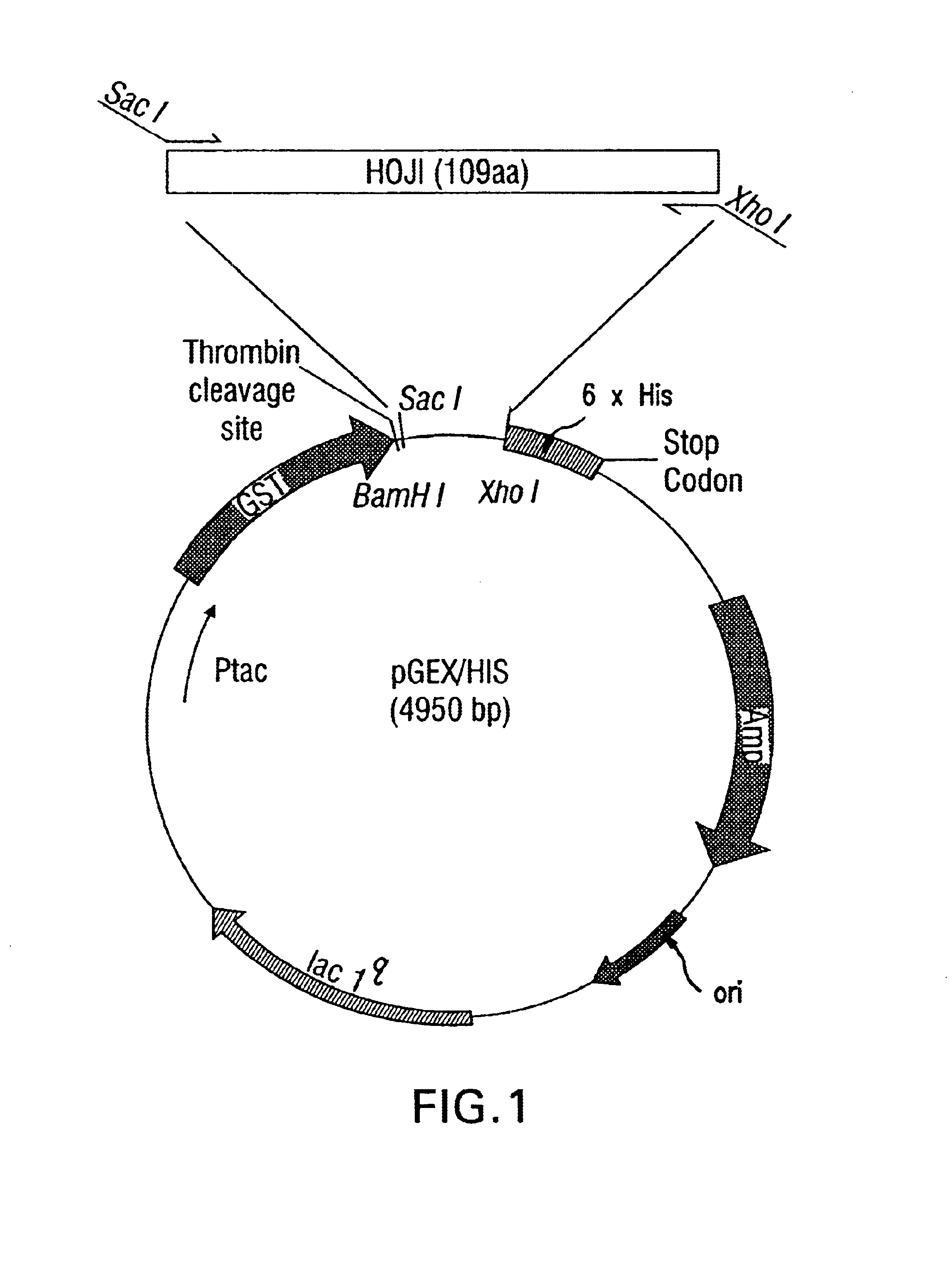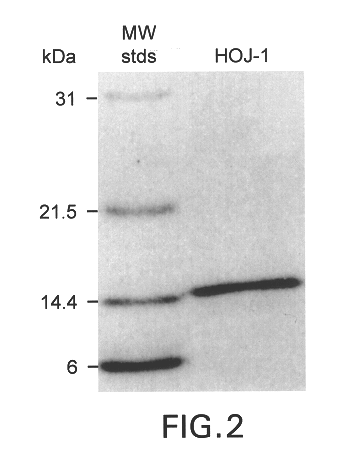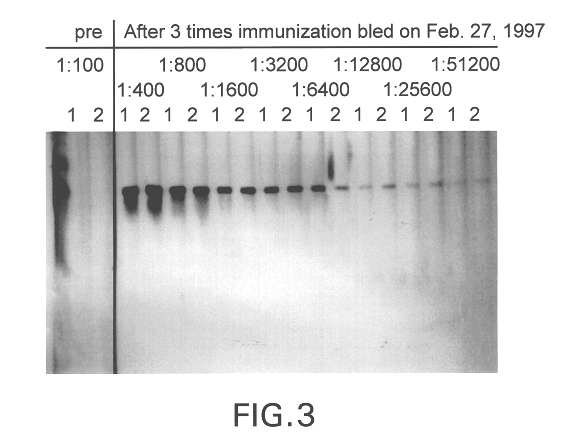A new human tumor-associated gene
- Summary
- Abstract
- Description
- Claims
- Application Information
AI Technical Summary
Problems solved by technology
Method used
Image
Examples
example 1
Materials and Methods
a. Bacterial and Yeast Strains
Manipulations of bacterial strains and of DNAs were by standard methods (Ausubel et al., 1994). Escherichia coli subcloning efficiency DH5.alpha. and HB 101 competent cells (Gibco / BRL) were used as hosts. Competent dual-reporter yeast strain YRG-2 (Stratagene) were transformed according to manufacturer's instructions.
b. Construction of Bait Plasmid and Two-hybrid Screening
The complete human MAGE-1 cDNA coding for the open reading frame (Van Der Bruggen et al., 1991) was amplified from reverse transcribed RNA isolated from melanoma cell line M12 (Hoon et al., 1995) using primers A58 (5'-GGGAATTCTCTCTTGAGCAGAGG-3')(SEQ ID NO:5) and D1 (5'-GGGTCGACCAAAGCTGCTTCAC-3')(SEQ ID NO:6) which includes EcoRI and SalI cloning sites, excluding the primary ATG of the open reading frame sequence and extending past the TGA stop codon by 57 nucleotides. The 900 base pair amplicon was subcloned into the pGBT9 "bait" vector (Clonetech) and the correct ...
example 2
Results
Cloning of a Novel Gene HOJ-1.
The inventors report a novel human gene, designated HOJ-1, which was originally isolated from a human testis cDNA library through the identification of reacting proteins with MAGE-1 (Miyashiro et al., submitted). A yeast two-hybrid screening procedure was performed in competent YRG-2 yeast cells using a pGBT9 / MAGE-1 fusion plasmid as the bait and a human testis cDNA library in pGAD10 as the prey. One clone, C28, obtained from this screen, was identified and dideoxynucleotide sequenced. Based on the sequence, the inventors synthesized primers (TABLE 3) and applied the 5' RACE. Sequencing of 5' RACE PCR.TM. products allowed identification of an additional 5' region of the transcript. The compiled sequence (888 bp) of the assembled cDNA, designated HOJ-1, contains an open-reading-frame (ORF) encoding 109 amino acids (SEQ ID NO:1 and SEQ ID NO:2).
A search of the protein database for homologies to HOJ-1 revealed similarity (64% identity) of the predic...
PUM
| Property | Measurement | Unit |
|---|---|---|
| Digital information | aaaaa | aaaaa |
| Digital information | aaaaa | aaaaa |
| Digital information | aaaaa | aaaaa |
Abstract
Description
Claims
Application Information
 Login to View More
Login to View More - R&D
- Intellectual Property
- Life Sciences
- Materials
- Tech Scout
- Unparalleled Data Quality
- Higher Quality Content
- 60% Fewer Hallucinations
Browse by: Latest US Patents, China's latest patents, Technical Efficacy Thesaurus, Application Domain, Technology Topic, Popular Technical Reports.
© 2025 PatSnap. All rights reserved.Legal|Privacy policy|Modern Slavery Act Transparency Statement|Sitemap|About US| Contact US: help@patsnap.com



